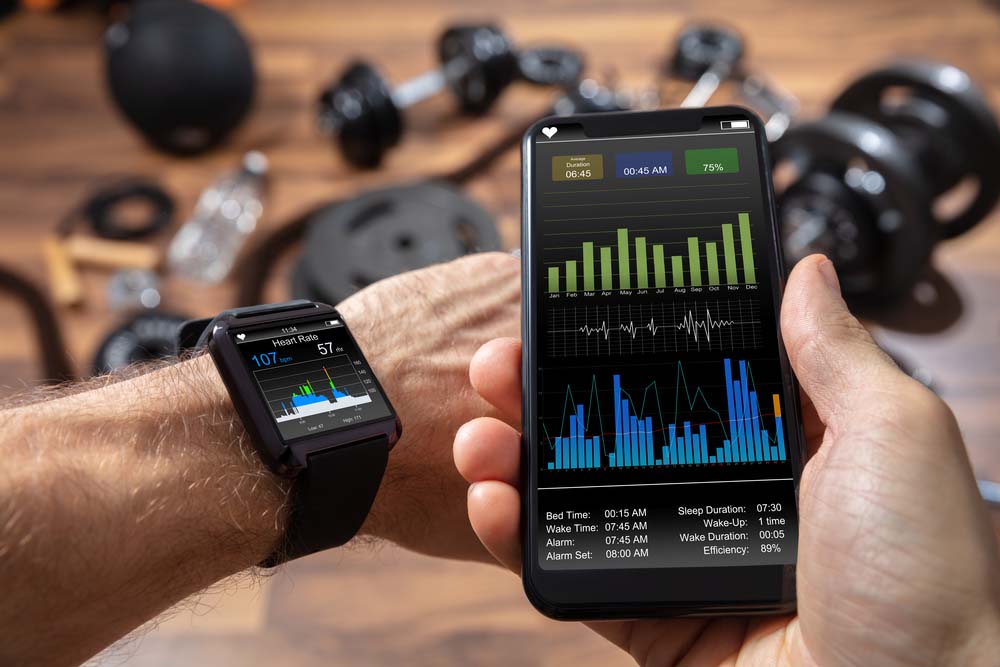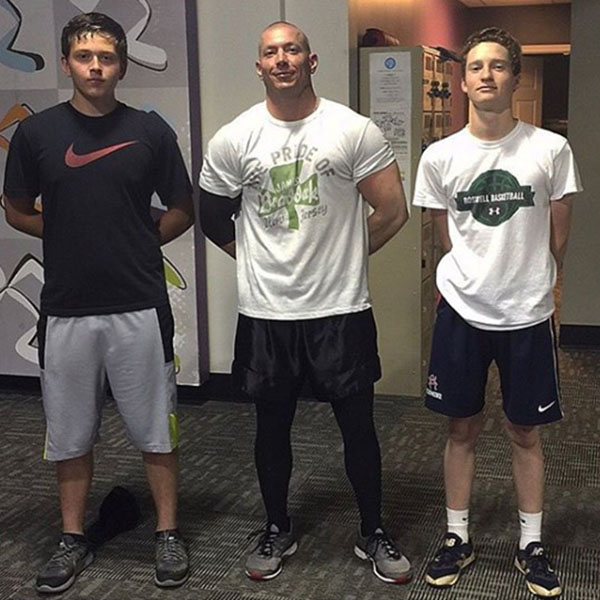Georgia Personal Training/Roswell Fitness Factory
For years, running has been the gold standard for cardiovascular fitness. But with the advent of technology, it is now possible to monitor your heart rate without ever having to run a single step. This is known as Heart Rate Training, and it uses a device called an electrocardiograph (ECG) that measures how hard your heart is working during exercise so that you can determine whether you’re improving your cardiovascular condition over time.
Heart rate training is an effective way to improve your cardiovascular fitness and achieve your health goals by monitoring your heart rate. Heart rate training can be done in the comfort of our Georgia Personal Training/Roswell Fitness Factory facility, with no equipment needed other than a watch or smartphone app that tracks it for you. You will be able to see how well you’re doing over time with this method of measuring fitness progress, which will motivate you even more!
How Do I Know if My Heart Rate is Too High?
If your heart rate goes above 85 percent of your maximum heart rate, you are likely over-exerting yourself. If this happens, you may experience symptoms like dizziness and nausea. The most common measure of fitness is based on your heart rate, or how many times your heart beats per minute (bpm). Heart rate is measured by a heart rate monitor, which displays your current heart rate. The higher your number, the greater the intensity of exercise you’re doing and vice versa.
Heart rate training is a method of exercising that uses the heart rate to determine how much exercise someone needs to do. It is based on the principle that in order for your body to get stronger, it needs to be exposed to stressors like high intensity workouts. The idea behind HRT is that the body will adapt to these stressors and become stronger. The basic premise of heart rate training is that by monitoring your heart rate during exercise, you can determine how hard you should be working out at any given time. If your heart beats faster than normal, it means that you’re overdoing it and need to slow down or stop altogether.
When you exercise, this number increases as the body attempts to deliver oxygen-rich blood to hardworking muscles. Heart rate is a measure of the number of times your heart beats per minute (bpm). The autonomic nervous system controls many bodily functions that occur without any conscious effort, such as digestion and breathing. The autonomic nervous system is divided into two parts: the sympathetic and parasympathetic nervous systems. The sympathetic nervous system activates when you are stressed or anxious; it speeds up your heartbeat by sending messages from nerves in your brain down through your spinal cord and out into other organs like your heart muscle. The parasympathetic branch acts opposite from its counterpart–it slows down activity when you need rest or relaxation (like after exercise).
Heart rate training is a great way to measure your fitness level, as well as help you achieve your health goals. If you are new to heart rate training, here are some things to keep in mind:
- Heart rate training can help you improve your cardiovascular fitness and lose weight by improving the efficiency of how fast oxygen moves through your body. As a result, this will allow for longer periods of intense exercise without feeling exhausted or fatigued.
- The key with heart rate-based workouts is consistency–the more often you perform them (and stick with it), the better results will be over time!
- Heart rate training can help you improve your cardiovascular fitness and lose weight by improving the efficiency of how fast oxygen moves through your body. As a result, this will allow for longer periods of intense exercise without feeling exhausted or fatigued. The key with heart rate-based workouts is consistency–the more often you perform them (and stick with it), the better results will be over time!
- Heart rate training can help reveal just how fit or unfit you really are.
- Heart rate training can help you see how your fitness level is improving over time.
If you are new to exercise, it is important to know that your heart rate should increase when you start exercising and decrease as you continue to work out. This change in heart rate is a good indicator of just how hard your body is working and how much oxygen it needs during exercise. If your goal is to improve overall health and fitness, then tracking these changes over time will give you an idea of how effective each workout session has been for building strength or endurance.
When your heart rate increases, this is an indication that the body is working harder and using more energy. When your heart rate decreases, it means that you’re becoming more efficient at performing the exercise. This can be a good way of gauging how much fat tissue is being broken down during exercise and whether or not you are losing weight. During heart rate training, you use a monitor that measures your pulse to determine how hard your heart is working during exercise.
People who are new to heart rate training often have trouble interpreting their monitor’s readings. The most common mistake is to assume that when your HR increases, it means you’re working harder or burning more calories. This isn’t always true; sometimes the only difference between two exercises is speed or incline level. By measuring your pulse at various times during an activity and comparing them with previous workouts, you can determine whether you’re improving your cardiovascular condition over time.
Heart rate training is a method of conditioning your body by exercising at various intensities. By measuring your pulse at various times during an activity and comparing them with previous workouts, you can determine whether you’re improving your cardiovascular condition over time. You can measure your heart rate by placing two fingers on your wrist or neck, but some people prefer to use a monitor that measures their pulse electronically. If you choose this option, there are many models available in stores or online–some are designed specifically for athletes while others are marketed towards casual users looking to improve their health through exercise.
If using a monitor is not convenient for whatever reason (perhaps cost or accessibility), there are still ways of tracking progress without one: simply count how many times per minute that each beat feels like it “lurches” against its neighbor as opposed to moving smoothly through space; this may be easiest if done while lying down so gravity does not interfere with the measurement process! Alternatively, you can simply count the number of heart beats per minute by listening to them with your ear–this method is less accurate than using a monitor or counting the lurches, but it’s still useful in tracking progress over time.
Heart rate monitors are useful for several reasons. First, they allow you to know exactly how hard you’re working during exercise. If your heart rate is within a healthy range and stays there throughout your workout, then the intensity level of that exercise was appropriate for your fitness level and health goals. Second, using a heart rate monitor can help prevent injury by ensuring that an athlete never tries too much or too little when exercising. Thirdly, tracking progress over time allows athletes who use them regularly to see how their fitness improves over time–and this knowledge can motivate them even more than just seeing numbers get higher on the scale!
Using a heart rate monitor is not foolproof, however. For example, if you’re out of shape and haven’t exercised in a while, the first few times you try to use one may be discouraging. It’s normal for your heart rate to be higher than usual for the first few minutes of exercise–this is known as “warmup effect.” Your heart rate also tends to go up more quickly when you’re exercising in hot weather or at high altitudes.
Heart rate training is a great way to improve your cardiovascular fitness. It’s also effective for people who don’t like to run or bike, as it allows you to get the benefits of cardio without having to participate in conventional sports. This type of training has become popular among seniors who may be worried about falling while doing other forms of aerobic activity outside their homes.
Conclusion
Heart rate training is a great way to measure your progress and stay motivated. It can also help you avoid injury by ensuring that you don’t overdo it when exercising at high intensity levels.
Georgia Personal Training/Roswell Fitness Factory
Our fitness center is located in the Garrison Hill Village Shopping Center. We are conveniently located right at the intersection of Marietta Highway and Willeo Road, right where Roswell, Marietta, and Sandy Springs intersect. The gym is open 24 hours a day, 7 days a week to our members. Our customers enjoy secure, barcode access to the facility, or access the club using a digital barcode included with our free fitness app. The address for Roswell Fitness Factory is 9420 Willeo Road, Suite 105, Roswell, Ga 30075. If you have questions regarding membership options or scheduling a tour of the gym, you may call us at (770) 241-1086, or simply fill out and submit the form below, and we will get back to you the same day.
Georgia Personal Training Owner Matt Lein and Clients
9420 Willeo Road (Suite 105)
Phone: (770) 241-1086
Email: matthewlein@bellsouth.net
GEORGIA PERSONAL TRAINING
9420 Willeo Road (Suite 106)
Phone: (770) 927-7006
Email: info@georgiapersonaltraining.com



